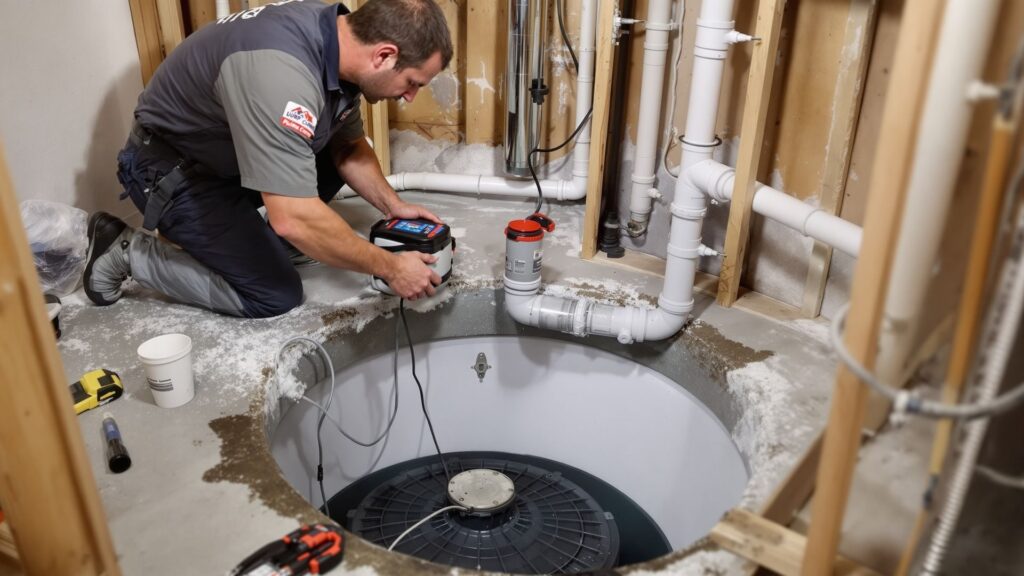Sump Pump Repair & Installation in Central Pennsylvania

Flooded Basement? Sump Pump Stopped Working?
We Fix, Replace, and Install Sump Pumps Throughout Central PA.
Call Now: 717-944-3929
What Does a Sump Pump Do?
A sump pump removes excess groundwater from your basement sump pit and pumps it safely away from your home’s foundation. When it fails, water can quickly flood your basement, ruining carpets, walls, and stored belongings.
If your pump is noisy, not turning on, or constantly running, it’s time to call in a licensed plumber. Murray Plumbing Inc specializes in sump pump installation & maintenance, ensuring your system runs efficiently and protects your home from costly water damage year-round.
Common Sump Pump Problems We Fix
- Pump won’t turn on or respond to rising water
- Loud noises or excessive vibration
- Water not exiting the discharge line
- Backup battery system failure
- Tripped GFCI outlet or electrical issues
- Stuck float switch
- Frequent cycling or running dry
- Frozen or clogged discharge lines
- Old pumps beyond their 7–10 year lifespan
We repair pedestal and submersible sump pump systems of all brands.
Sump Pump Installation & Replacement
Need a new sump pump? We’ll help you choose the right unit for your basement, install it professionally, and protect your home from future flooding. We also provide expert sump pump maintenance & replacement to ensure long-term reliability and peace of mind.
Our sump pump installation services include:
- Sump pit creation or modification
- Submersible and pedestal pump installation
- Code-compliant electrical and plumbing setup
- Check valve and discharge line install
- GFCI outlet and dedicated circuit assessment
- Removal of old or failed units
Backup Sump Pump Systems
- Battery backup sump pumps
- Water-powered backup systems (no battery or electricity)
- Dual pump systems for high groundwater areas
- Audible and Wi-Fi-connected alarm systems
- Backup monitoring panels for peace of mind
Don’t wait for a storm to find out your pump can’t keep up — let us assess your basement’s risk and upgrade your setup today.
Why Central PA Homeowners Choose Murray Plumbing
- Emergency Sump Pump Repairs Available
- Licensed, Local Technicians
- Battery Backup Specialists
- Fast Turnaround & Same-Day Appointments
- Clean, Courteous, and Honest Workmanship
- Trusted by Homeowners Across Central PA
Serving Homes Across Central Pennsylvania
From basement flood emergencies to long-term flood prevention — we’ve got you covered.
- Harrisburg
- Camp Hill
- Hershey
- Mechanicsburg
- New Cumberland
- Elizabethtown
- Linglestown
- And all surrounding Central PA areas
We provide sump pump installation, repair, and maintenance throughout:
Sump Pump FAQs
Q: How long does a sump pump last?
A: Most pumps last 7–10 years. If yours is older, we recommend a full inspection or replacement.
Q: Can I add a battery backup to my current pump?
A: Yes! We install backup systems for both new and existing sump pumps.
Q: My basement flooded and the pump didn’t turn on. What happened?
A: Could be a float switch issue, dead motor, power loss, or a clog. We’ll diagnose and repair it fast.
Q: Do you handle new installations in homes that don’t already have a pit?
A: Yes — we offer full sump pit excavation, pump install, and discharge line routing.
